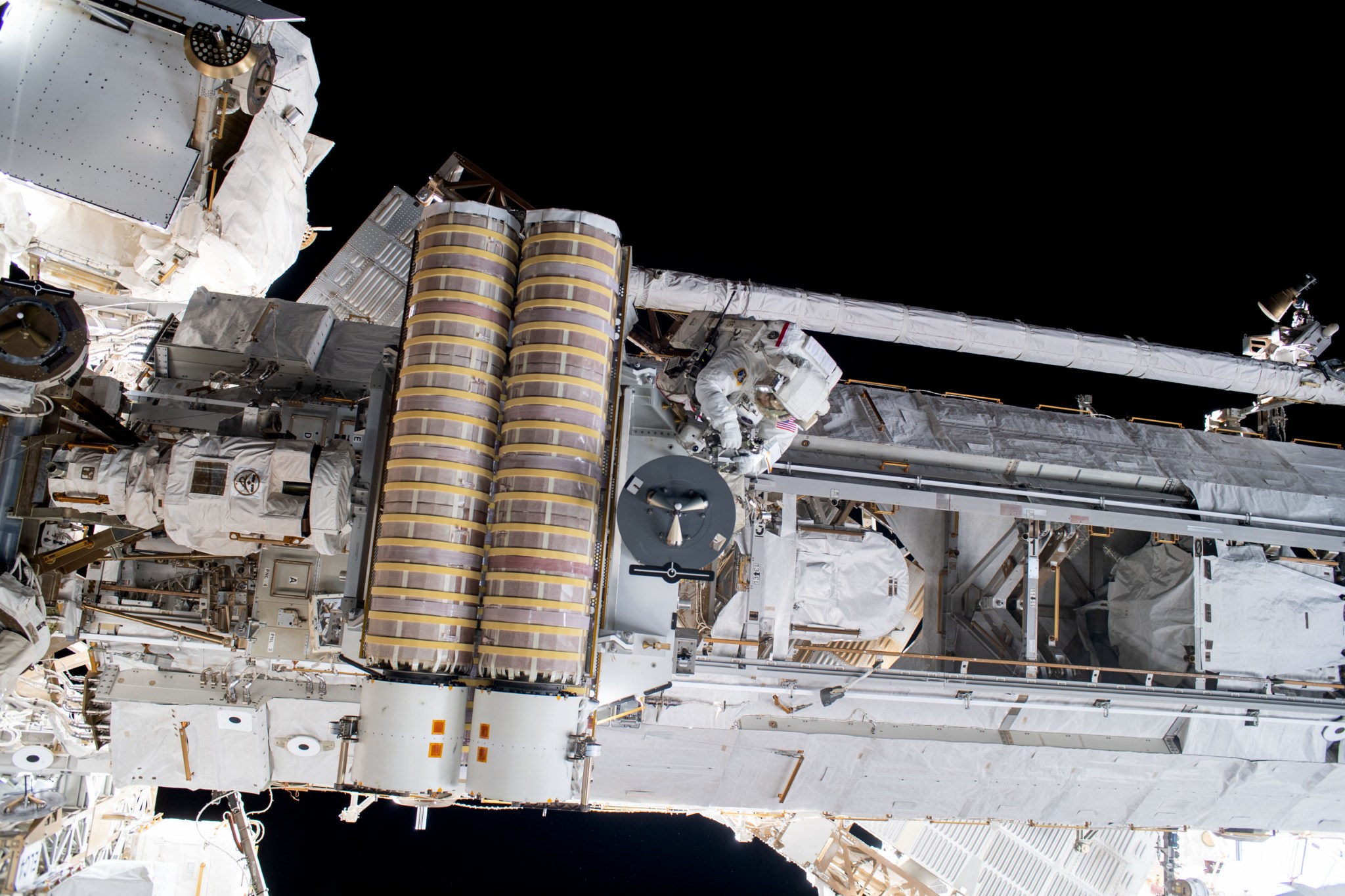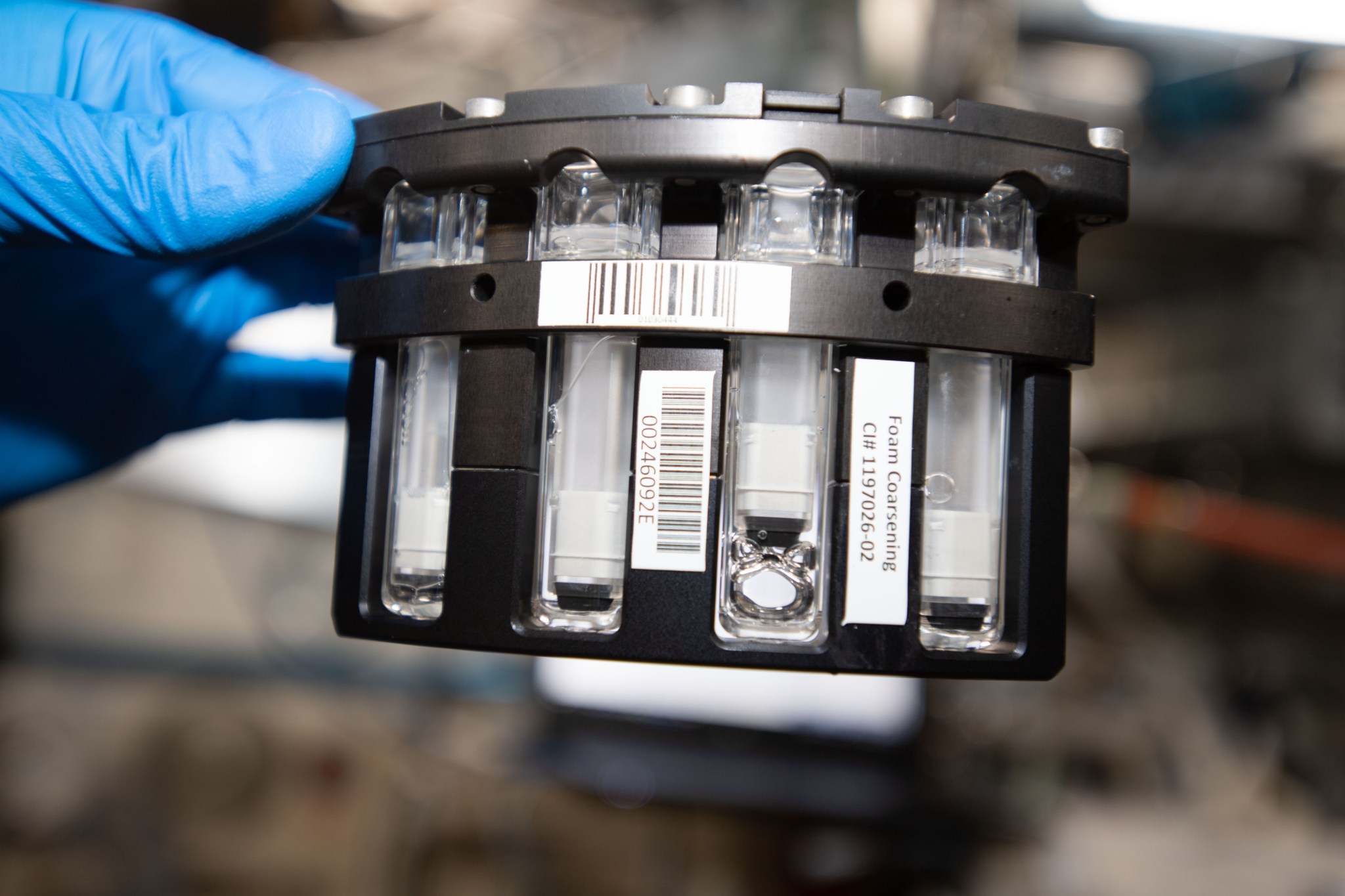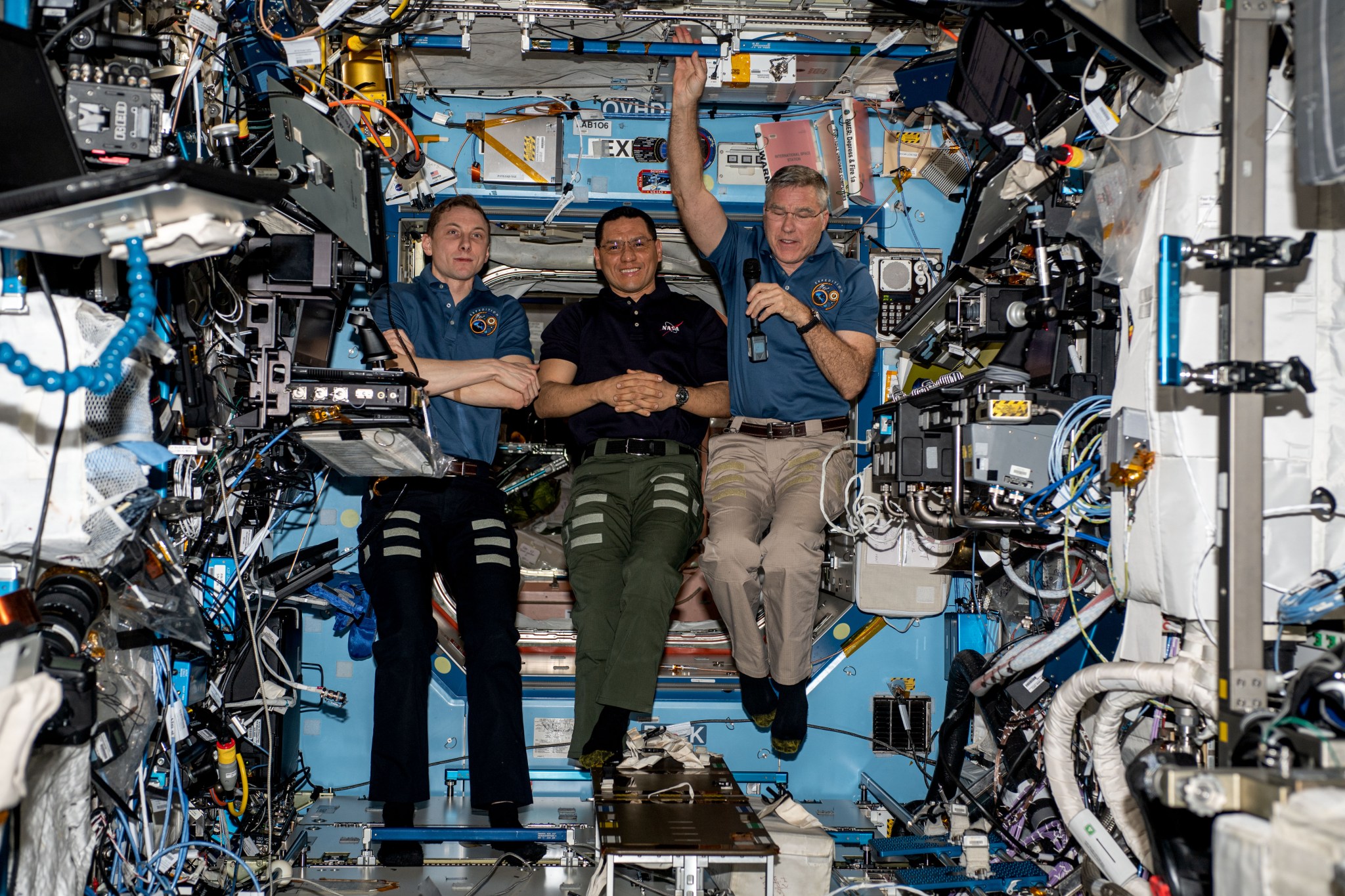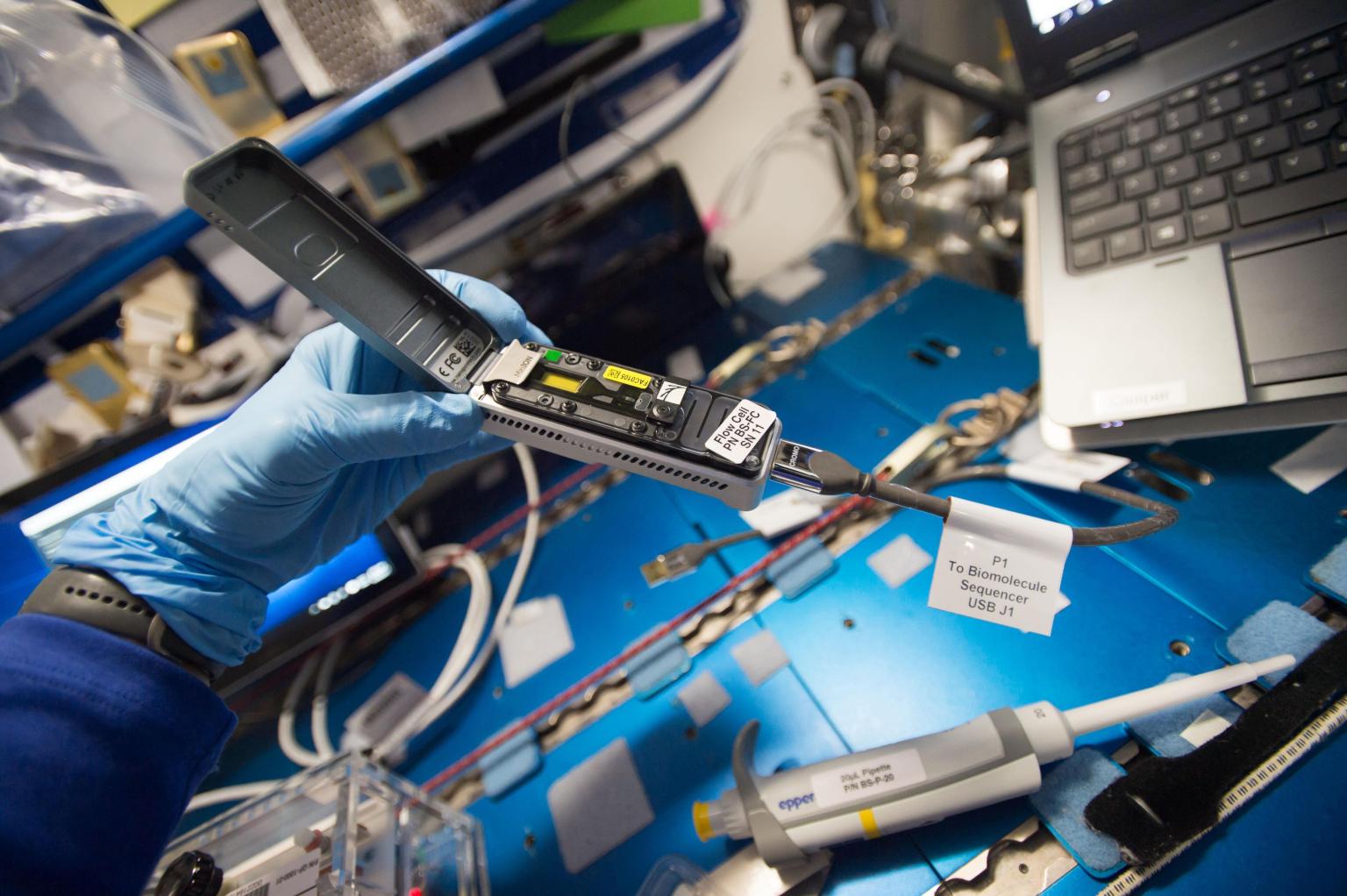Crew members aboard the International Space Station conducted scientific investigations during the week of June 12 that included demonstrating improved technology for removing carbon dioxide from cabin air, examining the properties of foams in microgravity, and wrapping up work to examine the process of baking in space.
Here are details on some of the microgravity investigations currently taking place aboard the orbiting lab:
Scrubbing the Air
Four Bed CO2 Scrubber demonstrates a technology for removing carbon dioxide from the air inside of spacecraft. The technology upgrades the current system in use on the space station and adds an improved absorbent to contribute to the goal of 20,000 hours of continuous operation for future scrubbers. Improved reliability and performance of carbon dioxide removal systems could help maintain the health of crews and ensure the success of future missions. This technology also has potential applications on Earth in environments that require removal of carbon dioxide to protect workers and equipment. During the week, crew members took carbon dioxide measurements for ground analysis.
Learning More About Wet Foams
Foam Coarsening, an investigation from ESA (European Space Agency), examines the properties and rearrangement of wet foams or dispersions of gas in a liquid matrix. Microgravity makes this work possible by eliminating the influence of gravity-related forces such as buoyancy of particles and drainage. These foams could be useful in fighting fires and cleaning water in space and have multiple applications on Earth, including in formulations for detergents, food products, and medicine and as part of oil recovery and firefighting efforts. During the week, crew members exchanged samples inside the experiment container.
Baking in Space
Zero-G Oven, sponsored by the ISS National Lab, examines heat transfer and the process of baking in microgravity, exploring how to safely heat and then cool a special oven in space. On future long-duration missions, fresh-baked food could have psychological and physiological benefits for crew members. This research also compares the process of baking in microgravity and Earth’s gravity, which could improve methods for cooking nutritious food in various settings on Earth. Crew members packed the oven during the week for return to the ground.
Other Investigations Involving the Crew:
- Ring Sheared Drop-IBP, sponsored by the ISS National Lab, studies high-concentration protein solutions and tests computer models for predicting their behavior. Results could enable production of next-generation medicines and improve in-space manufacturing and 3D printing.
- PK-4, a scientific collaboration between ESA and Roscosmos, studies complex plasma crystals. Understanding how these crystals form in microgravity could lead to new research methods, improved spacecraft designs, and enhanced use of plasmas in industry on Earth.
- Zero T2 examines the effects on bone, muscle, and aerobic health and performance when crew members do not exercise on a treadmill during flight. Results could help determine whether other exercise regimens are adequate to maintain physical health on future missions.
- Mochii conducts real-time imaging and analysis of particles on the space station that can cause vehicle and equipment malfunctions. The ability to analyze particles becomes especially important on deep space exploration missions that cannot send samples back to the ground for analysis.
John Love, ISS Research Planning Integration Scientist
Expedition 69
































